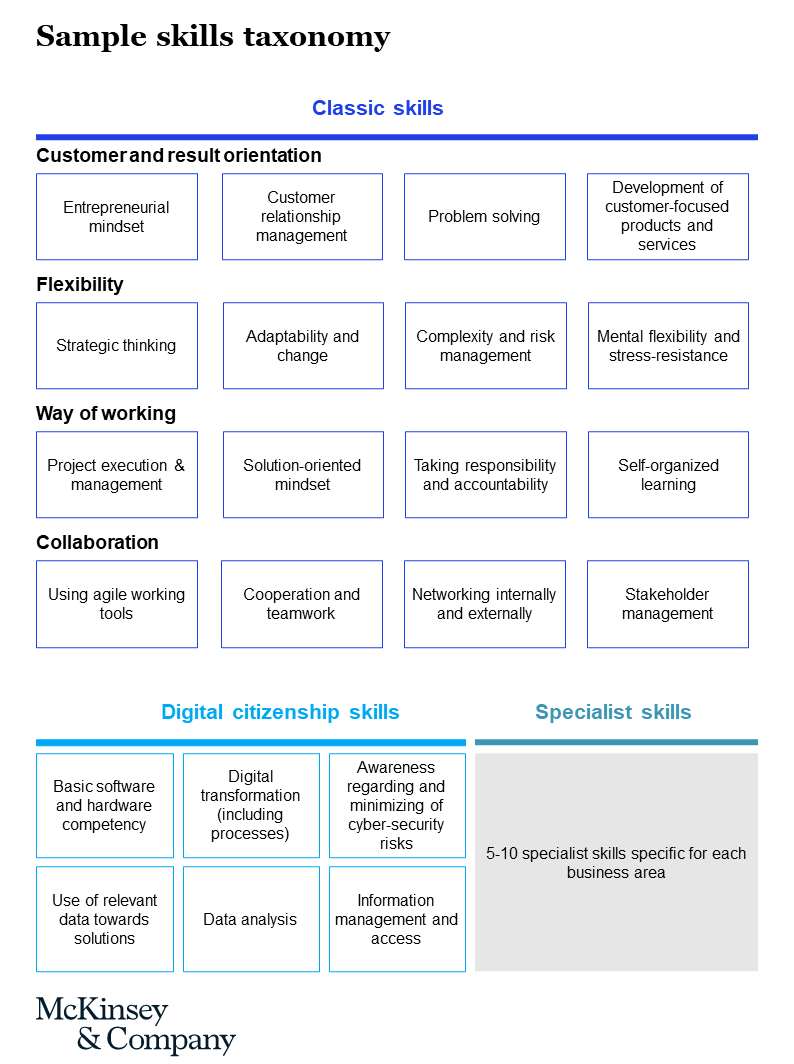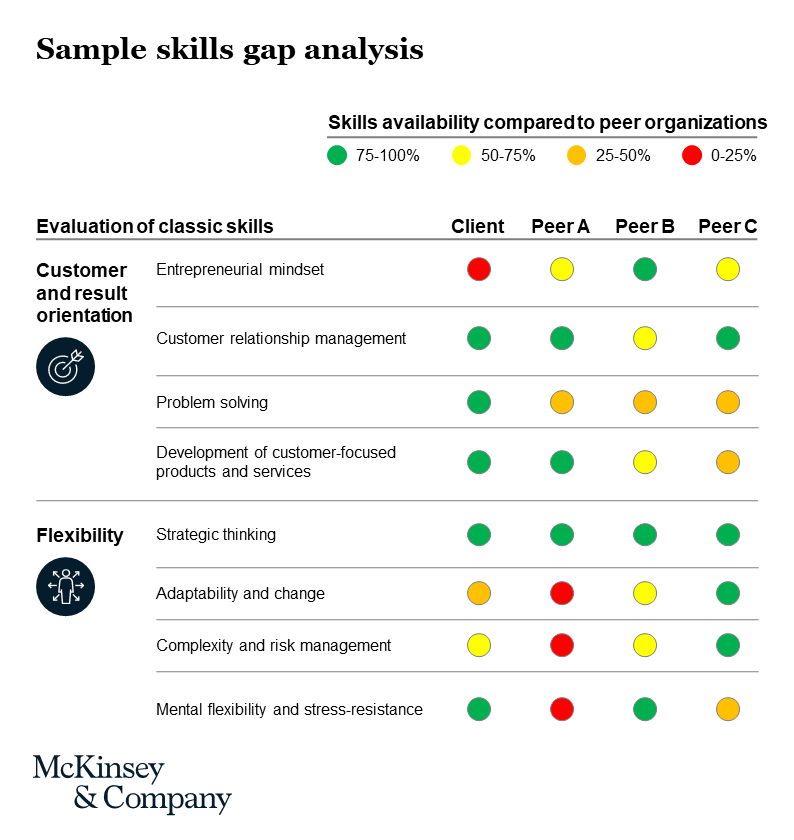To help organizations thrive, especially in times of disruption, HR departments need a granular, up-to-date understanding of employees’ skills and skill gaps.
This deep understanding can enable an organization to conduct strategic workforce planning, recruit and retain the right talent, offer useful and engaging training, and create compelling employee development expectations and career paths. Organizations that realign HR processes to match skill needs can boost employee engagement by 50 percent, lower training and development program costs by 50 percent, and raise productivity by 40 percent.
However, many organizations have only a vague, implicit understanding of their skills base and needs. We recommend that HR teams take three basic steps to build on this:
Develop a detailed skills taxonomy
To get started, develop a skills taxonomy for the organization to identify the most crucial skills for success. Taxonomies typically draw on at least three sources of insight:
- Existing taxonomies: Tap the organization’s previous work, analyses by research organizations and industry associations, and taxonomies from similar organizations or adjacent industries.
- Skill analytics: Use advanced analytics to explore data from professional social networks or job postings to identify high-demand skills and detect shifts.
- Expert insights: Interview top executives, academics, and other industry experts.
With these insights in hand, host workshops to align stakeholders on the most important skills and draft a skills taxonomy (exhibit 1). Seeking input across business units, geographies, and hierarchies can improve buy-in, focus on the right skills, and build a learning culture.
We recommend prioritizing 25-30 skills all employees need, plus 5-10 specialist skills for each business area. Aim for a working prototype that can evolve as the organization learns.

Identify skill gaps across the organization
After pinpointing critical skills, assess where the organization stands today, set ambitions, and identify gaps to close. Set targets for each skill, and compare them against current averages at the team and organizational levels. Translate this data into qualitative takeaways about strengths and weaknesses.
Benchmarking is not easy, but a pragmatic approach can help gain insights quickly. Successful organizations typically use at least two of three methods:
- Skill-gauging workshops: Hold executive workshops to assess the prevalence of skills in their units, taking a systematic approach with several rounds of skill estimation and collective reflection to improve reliability.
- Surveys: Since employees know their skill sets best, consider surveying employees—remaining mindful of privacy concerns—to gain a more granular perspective.
- Skills scraping: Scrape skills data from professional networks to identify skills based on profiles with similar job titles outside the organization (exhibit 2).

Devise measures to close the most important gaps
With a taxonomy in hand and a clear idea of skill needs, make structural adjustments to HR processes and launch strategic initiatives to close the biggest gaps. These advances typically require measures along three axes:
- Skills-based hiring: Integrate future skill assessments into the hiring process and set skill-based hiring targets.
- Reskilling and upskilling: Personalized learning journeys can close the biggest skill gaps and protect learning time for employees.
- Performance management: Adjust career models and performance evaluations to incentivize building skills, coaching, and mentorship. Additionally, performance management can help monitor skills progression and keep the organization-wide skills inventory up to date.
One technology company integrated a personalized learning platform into its performance management system, a shift that helped engage employees in skills development while contributing to the organization’s business transformation and revenue growth.
Many companies combine these measures with change management to strengthen their learning culture and drive individual, team, and organizational success.
***
A clear understanding of an organization’s skills inventory and gaps can enhance strategic workforce planning, providing a skills-based perspective beyond mere staffing levels. These steps can refocus recruitment to tap the most relevant talent pools, and tailor learning and development to engage employees and close individual skill gaps more quickly, ultimately shaping a more future-proof organization.



